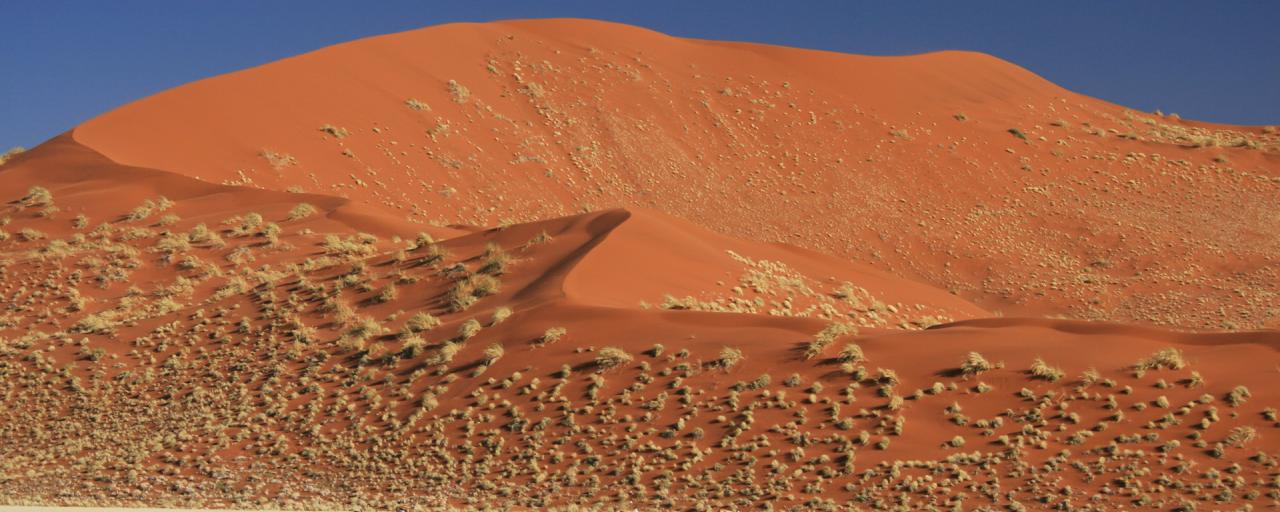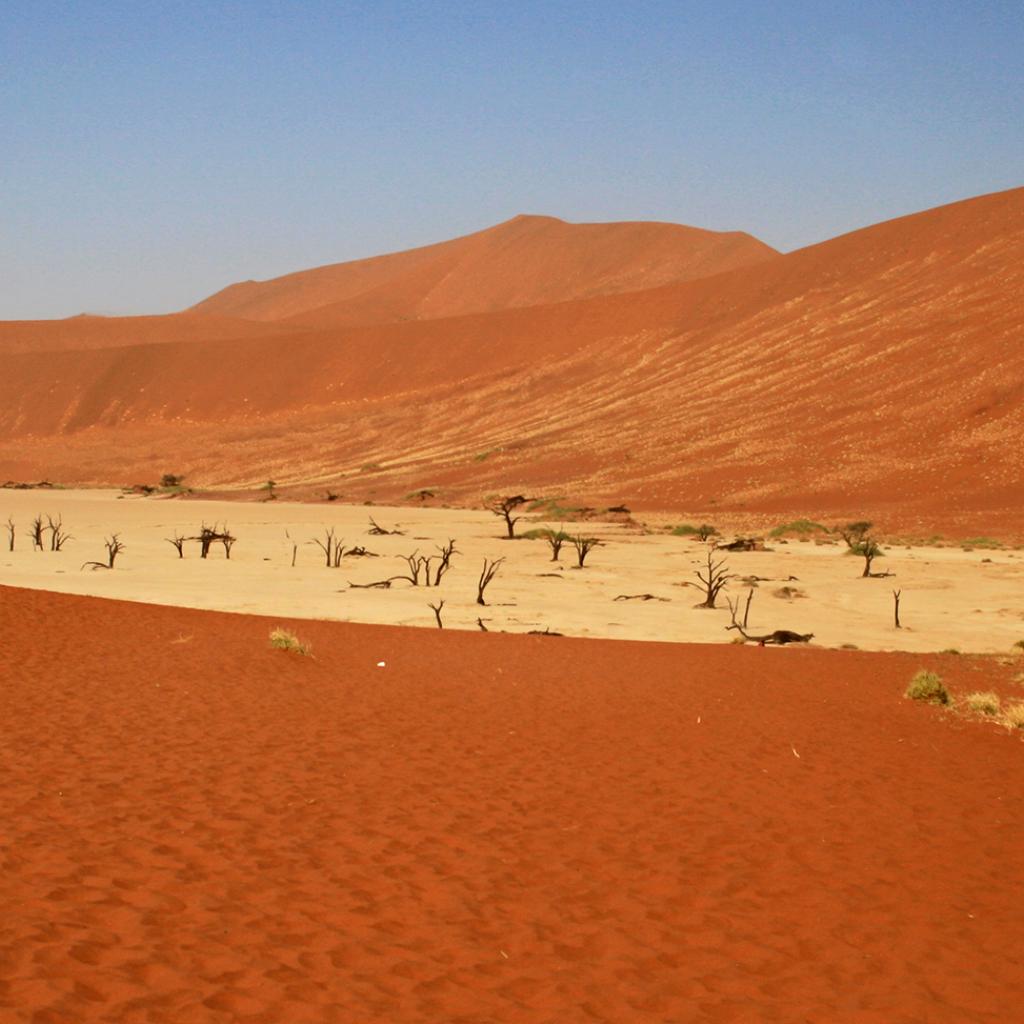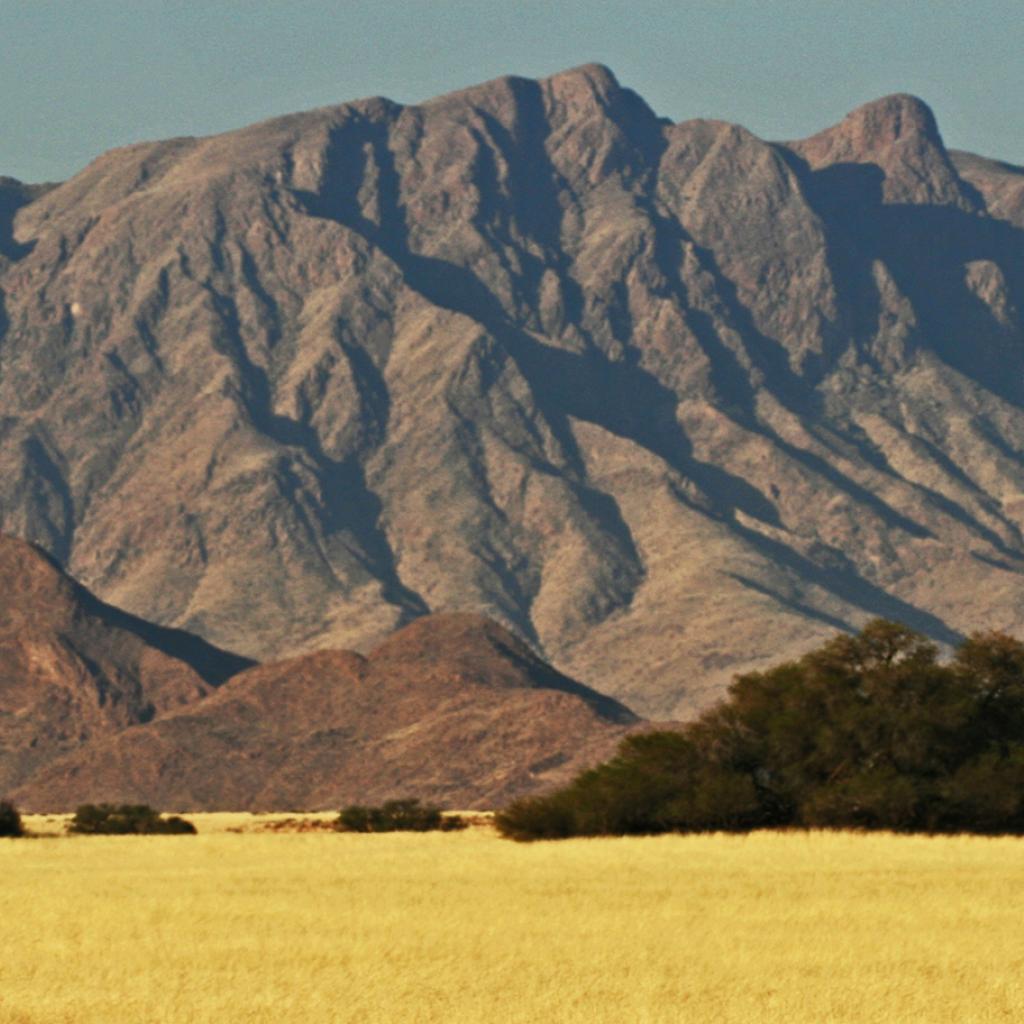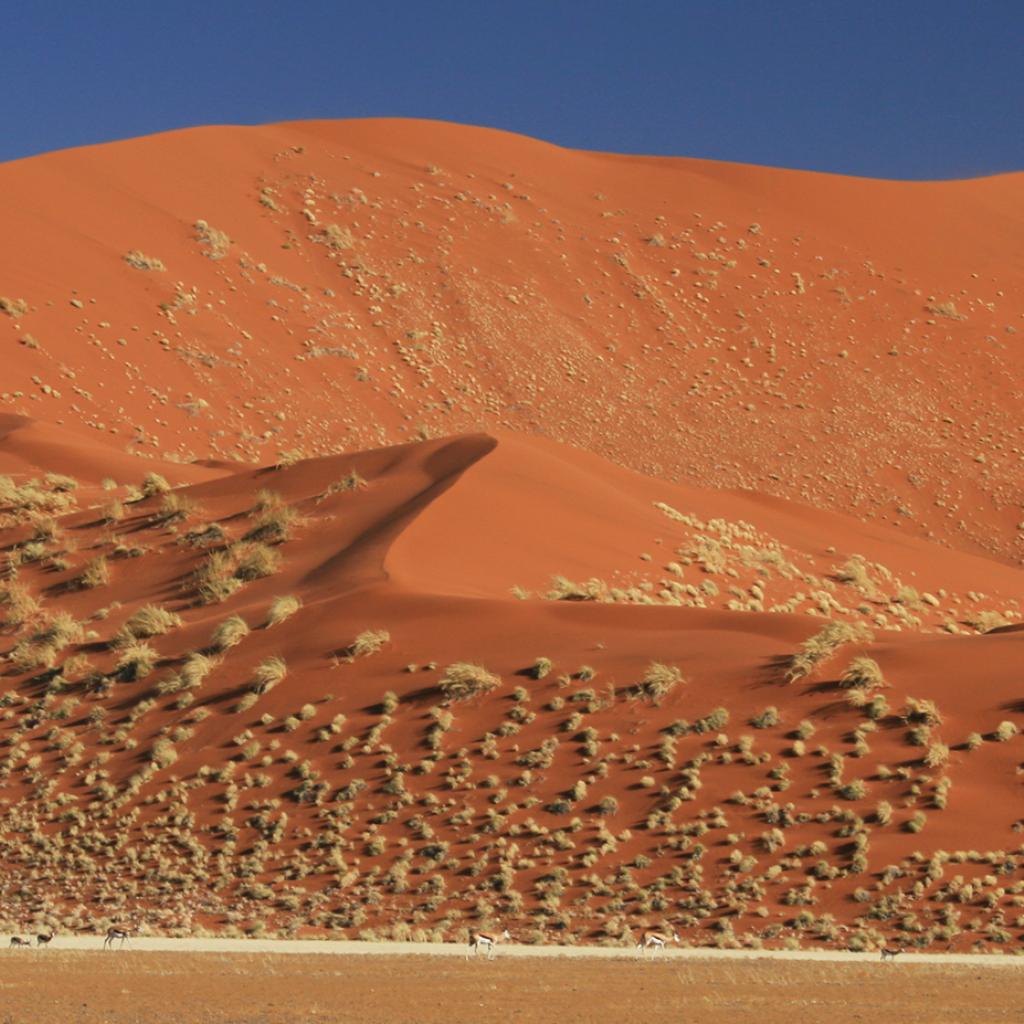In the Namib Desert, in the Namib-Naukluft National Park, you find many dunes, some of these have become, for different reasons, the park's icons and must-see spots for tourists and photographers.
The first dune that is encountered along the path from the Sesriem to the Sossusvlei is the Elim Dune, it is a static dune that allows the growth of grasses and shrubs; this dune owes its name to the farm that was present in this area before the national park was established.
The Elim dune is easily accessible by car but also on foot due to its proximity to the Sesriem, its summit is the ideal place from which to view a beautiful sunset over the dunes.
Another must-see dune is the dune 45, so named because it is located at the 45th kilometer of the road from the Sesriem to the Sossusvlei; what makes this dune preferred by photographers is its harmonious shape and its colors that change with the sunlight.
The dune 45, 80 meters high, can be reached without making deviations from the main road, and, thanks to its moderate slope, it is easy to climb without too much effort.
At the end of the path you arrive in the presence of a huge and very high dune, the Big Daddy, this dune with its 380 meters height is the highest of the Sossusvlei area; in front of the Big Daddy there is another dune of remarkable dimensions, it is the Big Mama dune, 350 meters high.
Climbing the Big Daddy can be tiring but the effort is worth the result, from the top of the dune you can enjoy wonderful views of the other dunes and the underlying vlei, a mystical show.
The Sesriem Canyon instead is located in the vicinity of the homonymous town, it is a long narrow gorge about one kilometer and 30 meters deep and has been dug in the course of time by the Tsauchab river.
The canyon is one of the few places where you can find water all year round, sometimes the river runs full of water, other times there are only a few pools of stagnant water but enough to quench the thirst of animals.
Sesriem means, in Afrikaans, "six belts", this is because the settlers to collect water had to hang a bucket on the bottom of the canyon using six leather straps.
It is possible to walk the canyon bottom and admire the amazing rock formations.





